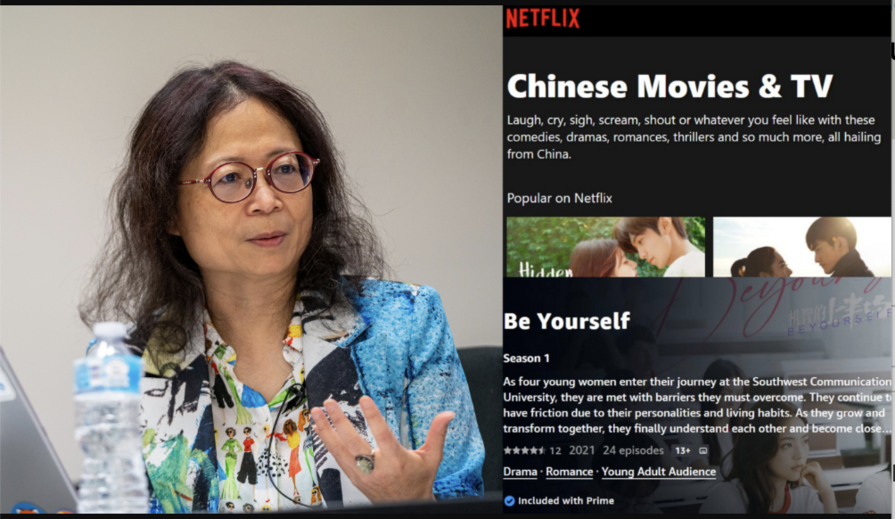By PENGYU ZHU
Introduction
Contemporary urban planning in China can be regarded as an extension of the western urban planning modes to the east. China borrows a lot of experience in the field of urban planning from United States. Comparing the urban policies in both countries, we can find many similar land use regulations and zoning ordinances, which eventually lead to common approaches in managing urban growth.
Meanwhile, disparities in urban policies also exist between China and the U.S. The fundamental difference lies in their different property rights defined in each country's Constitution. The U.S. emphasizes private land ownership while China features public land ownership. With the booming Chinese real estate market, housing prices shoot up, real estate investments soar to unprecedented heights, and consequently, land speculation becomes attractive. In order to minimize land speculation and maintain a healthy real estate market, the Chinese government promulgated a new Property Rights Law in the 10th National People's Congress of the People's Republic of China, which has come into effect on October 1, 2007. The new Property Rights Law explicitly defines that "land in People's Republic of China belongs to the public."
This study investigated the impact of the different property rights (especially land ownership) in the U.S. and China on the urban sprawl of their major cities. In this context, how land owners make decisions of whether and how to supply fringe land for development is important because urban growth will be determined by the extent to which these fringe lands are successfully incorporated into the urban fabric. My hypotheses are that the private land ownership in the U.S. essentially facilitates land speculation at the urban-rural fringe and therefore, to some extent, promotes urban sprawl. Private land ownership allows land speculators to easily buy land at the urban fringe, hold it for a period of time and then sell it to developers. In this sense, urban sprawl is dependent on the behaviors of many private land holders and is actually shaped by land speculations. Whereas in China, public land ownership renders more government control or restrictions on land speculation and therefore indirectly combats urban sprawl. It allows government to reasonably control the steps of urban growth and employ appropriate plans to develop cities in a more efficient manner so that a compact urban form is shaped. Of course, government speculation is also possible due to its monopoly power, especially if the principle-agent relationship is not well monitored and controlled.
In order to test my above hypotheses, I did a comparative study, investigating four cities in the U.S. (Sacramento, California; Charlotte, North Carolina; Portland, Oregon; and Austin, Texas) and one city in China (Nanjing). My findings are a little bit different from these original hypotheses however.
Comparative Study: Four cities in the U.S.
This part of the case study used survey data from the Lincoln Institute of Land Policy, which conducted a telephone survey study of over 2000 owners of open, undeveloped fringe land in the above four American cities, between 2002 and 2003. The interview queried owners about their identities, land characteristics, behaviors about their land, their interests and intentions for their land. In order to make this part of the case study more comparable to its China counterpart, I selected a subsample from the pool -- those large fringe lands with 15 acres land or above.
Using the survey data, I studied these large fringe land owners' decisions related to land use, subdivision, development, sale, and transfer. Overall, the survey indicates that large fringe land owners are not monolithic, but rather are a complex group. They are driven by multiple motivations in deciding whether and how to supply their lands for urban development and continued growth. Business profits, investment returns, planning rules, quality of life impacts, and bequest motives all play important roles. These results imply that development at urban fringe in the U.S. will not happen smoothly, but rather will occur at fits and starts depending on which large fringe land owners control which parcels.
Most of my findings are consistent across the fringes of Austin, Charlotte, Portland, and Sacramento. Although these four regions are different in their history, geography, economies, and policies, all are experiencing rapid population growth. A significant proportion of the large fringe land owners wishes to keep their land in its current use and pass it to their children or other family members in the future, while a significant minority of owners plans to either sell, transfer, develop or subdivide part or all of their land within the five years. There are few consistent predictors regarding ownership patterns or owners' interests and decisions. Interestingly, I did not find a clear group of investors or land speculators emerge in any region.
Nanjing, China
Among the previous four cities in the U.S., Sacramento holds the most similarities to Nanjing (China). Sacramento and Nanjing are both state capitals, both represent the core of a Metropolitan Statistical Area (MSA), and their urbanized areas have comparable sizes and are both experiencing rapid population growth and urban sprawl.
I conducted interviews with scholars and government officials who are familiar with the urban development of the Nanjing MSA. I also analyzed various planning maps, including Nanjing Metropolitan Area Plan, Comprehensive Plan of Nanjing City, etc., at the different stages of its urban development. Through these interviews and map-reading, I was able to investigate the behaviors of government as the public landowner and their impacts on urban sprawl of Nanjing.
Historically, Nanjing is a compact green city, the national capital of six dynasties. Within last two decades, Nanjing experienced tremendously fast pace of urban development, with its urban area increased almost 8 times. When I looked at the planning maps for Nanjing, I clearly found a two-stage urban development process. The first stage is 1990-2000, when government emphasized on rebuilding a "green city" and therefore granted a vast sum of low density villa/townhouse projects in the urban fringes. In this period, government controlled public landownership played a positive role in urban sprawl. Even though local government was not directly involved, they at least acquiesced in developers' or investors' land speculation. In this period, public landownership indeed failed to reduce land speculation and combat urban sprawl, due to local government's intention to build a low density utopia.
Criticized by the urban planning scholars, local government started to encourage "smart growth" and combat urban sprawl since 2000. This is also reinforced by the national regulations from the central government that impose more and more tough restrictions on converting farm land into residential or industrial uses. Currently, in cities such as Nanjing, almost all villa projects are ceased. Instead of selling land to developers at a low price, local government sets up new divisions that focus on recruiting investors, collecting financial capitals, or even issuing municipal bonds through local banks, and behaves as a large monopoly developer. In this sense, individual developers are like subcontractors. Local government set certain regulations through urban planning or zoning ordinance for individual developers to follow. These regulations often include requirements for high floor area ratio, high green space ratio, traffic demand analysis, etc. Such developments are often massive in its scale. For example, Nanjing created a new district --Jianye District-- in its south-western part. Municipal authority wants to build this district into a second CBD of Nanjing, with high density office, commercial, and residential uses. Its area is 82 square kilometers, twice of the current central district, with a projected population of 400,000. In this vein, public landownership works very well in reducing private land speculation and, to some extent, truly increases urban density and combats urban sprawl.
In retrospect, the public land ownership in China always serves the goals of the local government, for better or worse. It is a two-edged sword in controlling private land speculation and affecting urban development or urban sprawl.
Conclusion
This project is a pilot study on investigating the relation among property rights, land speculation, and urban sprawl in both U.S. and China. Comparing these cities in the U.S. and China, I distinguished the impact of the different property rights regime in the two countries on their urban sprawl. Throughout this study, I found no evidence that private landowners in the U.S. are always pursuing "land value maximization" which normally results in land speculation and urban sprawl. In fact, decisions of private landowners in the U.S. depend upon various reasons such as their characteristics, interests, and intentions. Investment returns, planning rules, quality of life impacts, and bequest motives are all very important factors.
Governments (as public landowners) in China have more control on fringe land use and urban growth, emphasizing on "land use efficiency" and "social welfare maximization". Their behavior is more policy oriented, with different intentions at the different urban growth stages. Similar to Nanjing, most local governments in China experienced a transition from pursuing low density "green" development (urban sprawl) to encouraging high density "efficient" development (smart growth). The public land ownership always serves the goals of the local government, which renders it a two-edged sword. It could either increase or reduce private land speculation, and affect urban development accordingly.
Pengyu Zhu is a Ph.D. student in USC's School of Planning, Policy and Development and focuses on urban economics and policy.
Image




